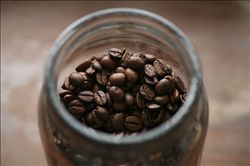Coffee Bean Honey Processing Flavor Description Processing Taste Cooperative Introduction
Introduction of Coffee and Soybean Honey treatment Flavor description processing process taste Cooperative
Another method for the treatment of coffee berries is semi-washing. This method is developed on the basis of washing. The first step is the same as washing. When the fruit turns red, it is picked and put into the pool. The immature fruit floats and the ripe coffee fruit sinks. Remove immature coffee berries in this way. Then remove the silver peel of the ripe coffee berries with a special machine, spread the berries on the ground, dry them and then wet them, and finally use a special machine to grind off the dried flesh and take out the coffee seeds. These are raw coffee beans that have been semi-washed.
The advantage of this raw coffee bean treatment method lies in: on the one hand, it saves water, on the other hand, it avoids mildew in the fermentation process and other problems that are not conducive to the quality of coffee beans. Mantenin produced in Indonesia is mostly semi-washed. Brazil has also used semi-washing in recent years, and Brazil is the only country in the world that has both sun, water and semi-washing treatments. Imported coffee beans treated in this way are often defective and unattractive. Beans dried in the sun are often made of foreign bodies or stones. The flavor of the beans treated by this method is more complex, but it has the taste of the sun, the fruit flavor is very strong, and the consistency is better than the washing method. General Brazilian beans as well as Mantenin and mocha are typical sun-treated coffee beans. Basically all robusta coffee beans are treated with sun-treated honey. The difference between the four levels of flavor lies in the dessert performance of the coffee, and the darker the coffee is, the sweeter the coffee will be. Nowadays, honey treatment is the first choice of Costa Rican coffee treatment. Compared with honey-treated coffee beans in other countries, Costa Rican honey-treated coffee beans will have the most stable and high quality. The honey treatment method, because of its stable quality and sweet and mellow flavor, has appeared more and more in our field of vision, and has also been adopted by major manors and producing areas. In addition, the honey treatment method also makes the coffee treatment method more rich and diversified, so that the coffee we enjoy is more delicious and high quality. Coffee beans: each fruit contains 2 coffee beans (except one pod, single bean Peaberry). The fruit of this kind of coffee contains only one coffee bean. Normally, 5% of each batch of coffee beans is a single pod. Coffee beans can be roasted and washed after drying and treatment: the peel, pulp and mucous membrane are removed by washing and fermentation. This method is also known as the complete washing method (Fully Washed). Shampoo is the most common way for most coffee-producing countries in the world to handle Arabica coffee beans. Some areas also use advanced high-pressure washing machines to clean the peel, pulp and mucous membrane of coffee beans, so fermentation is no longer needed. This method of using a high-pressure washing machine to treat coffee beans is called "natural washing (Pulped Natural)".

Important Notice :
前街咖啡 FrontStreet Coffee has moved to new addredd:
FrontStreet Coffee Address: 315,Donghua East Road,GuangZhou
Tel:020 38364473
- Prev

Grinding scale of Sidamo Lion King Coffee Bean introduction to the regional treatment method of variety production
Sidamo Lion King Coffee Bean Grinding scale Coffee Variety Regional treatment method Sidamo Coffee Raw beans are grayish in some places thick and small in some places, soft and strong acidity, mellow and sweet and spicy. It is one of the courtyard coffee in the highlands of southern Ethiopia. Unlike ordinary African coffee, Sidamo has clear acidity, a smooth taste, and a
- Next

Anatomical map of the growth environment of coffee beans-how to distinguish between good and bad coffee beans
Anatomical map of the structure and growth environment of coffee beans-how to distinguish between good and bad coffee beans should be planted with seeds with endocarp. The raw coffee beans we usually come into contact with have been removed from the endocarp, so they cannot be planted. The endocarp (sheepskin or paper skin) refers to the tea-brown hard skin that surrounds the coffee seeds, and the coffee beans with that skin are called shelled beans (sheepskin paper beans).
Related
- Guji coffee producing area of Guji, Ethiopia: Humbela, Shakiso, Wulaga
- What is the most expensive variety of Qiloso in BOP multi-variety group?
- How to store the coffee beans bought home?
- Why are Yemeni coffee beans so rare now?
- Ethiopian Sidamo all Red Fruit Sun Sun Santa Vini Coffee beans
- SOE is mostly sour? What does it mean? Is it a single bean? what's the difference between it and Italian blending?
- Is Italian coffee beans suitable for making hand-brewed coffee?
- How to choose coffee beans when making cold coffee? What kind of coffee beans are suitable for making cold coffee?
- Just entered the pit to make coffee, what kind of coffee beans should be chosen?
- Can only Japan buy real Blue Mountain Coffee? What are authentic Jamaican Blue Mountain coffee beans?

